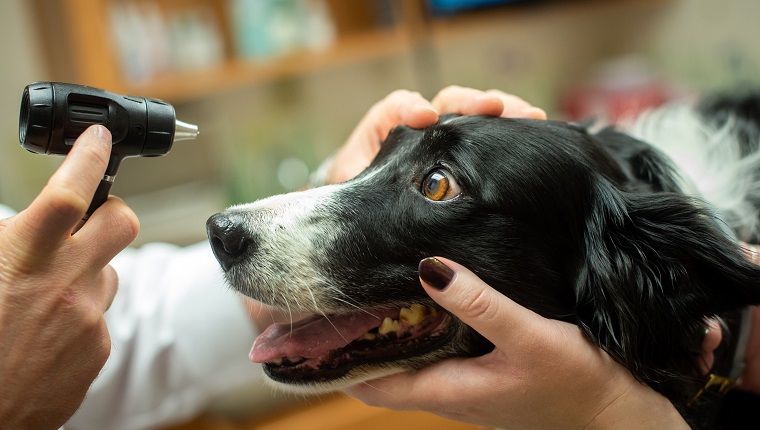Retinal hemorrhage in dogs is a medical condition that happens when the inner lining of a dog’s eye becomes susceptible to bleeding. This can lead to issues involving a loss of vision.
It can result from a range of circumstances, including suffering from trauma and high blood pressure, but the condition also affects certain dog breeds far more often than others.
Some of the most common dog breeds that appear to have a genetic predisposition include Labrador Retrievers, Miniature Schnauzers, and English Springer Spaniels.
If you see signs that your dog might be at risk of developing eye issues, then you must consult your veterinarian for a proper diagnosis and course of treatment. Here’s what you should know about the symptoms, causes, and treatments of retinal hemorrhage in dogs.
Symptoms Of Retinal Hemorrhage In Dogs
Retinal hemorrhage in dogs can produce a number of symptoms. Some of the most common symptoms include:
- Bleeding in the eyes and eye area
- Discharge from the eyes
- Loss of vision
- Pupils dilating
- Pupils appearing white in color
Causes Of Retinal Hemorrhage In Dogs

Retinal hemorrhage in dogs can either be a genetic or an acquired condition. In genetic cases, some of the most common dog breeds that develop the condition include:
- Border Collies
- Labrador Retrievers
- Miniature Schnauzers
- Bassett Hounds
- Bedlington Terriers
- Shetland Sheep Dogs
- Australian Shepherds
- Siberian Huskies
- Dalmatians
- English Springer Spaniels
When it comes to acquired cases, some of the most common causes include:
- High blood pressure
- Suffering a trauma
- Diabetes
- Blood disorders
- Kidney issues
- Infections (bacterial and fungal)
Treatments For Retinal Hemorrhage In Dogs
If you suspect that your dog might be developing retinal hemorrhage, your veterinarian will want to carry out a full physical examination and ask detailed questions about your dog’s medical history. They’ll also order blood, urine, and electrolyte tests.
Additionally, the vet will examine your dog’s retinas to look out for any abnormal signs. In some cases , vets may also use ultrasounds and analysis of eye fluid to confirm a diagnosis.
When it comes to treatment, the precise course of action will depend on the underlying condition. In some cases, a course of medicine can help. As ever, if your vet prescribes medication for your dog, it is vital that you follow the precise dosage and frequency instructions, along with completing the full course of medicine.
In severe cases, vets may suggest surgery on the retina.
While your dog recovers at home, you might need to make environmental changes to accommodate any loss of vision that your dog might have developed. Additionally, it’s important to keep up regular appointments with your vet to monitor the recovery and the health of your dog’s eyesight.
Has your dog ever suffered from retinal hemorrhage? How did your vet help your dog recover? Tell us all about it in the comments below.









